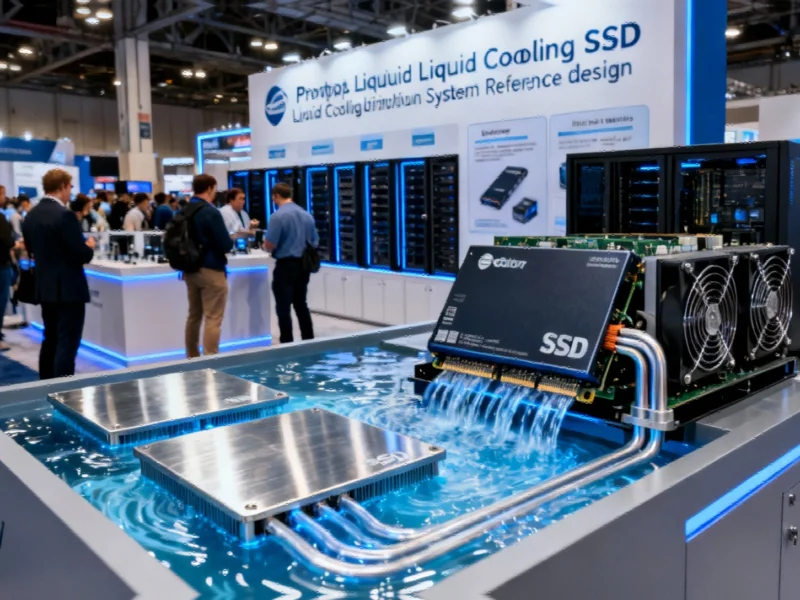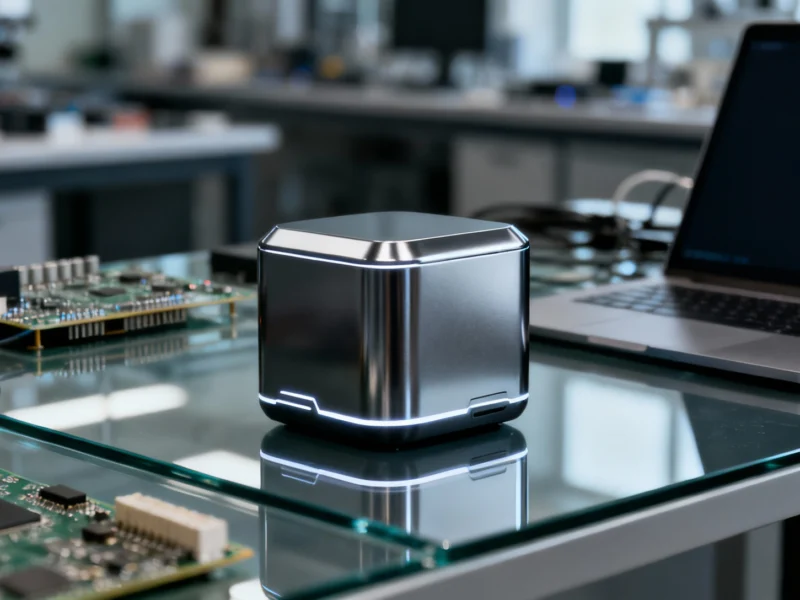The Thermal Challenge in Modern Data Centers
Industry analysts suggest that the exponential growth of artificial intelligence applications is fundamentally reshaping data center infrastructure requirements. According to reports from the 2025 OCP Summit in Silicon Valley, attendance surged to nearly 12,000 participants, up significantly from approximately 7,500 in 2024, with much of this growth attributed to AI infrastructure investments. This increased focus on AI capabilities is driving unprecedented demands for more sophisticated computer cooling solutions across all data center components.
Liquid Cooling Transition Accelerates
Sources indicate that while liquid cooling technologies have been showcased at industry events for several years, 2025 marks a turning point where adoption appears inevitable for AI-workload data centers. During keynote presentations, Google reportedly discussed their Deschutes Coolant Distribution Unit reference design, while multiple companies exhibited products based on open liquid cooling distribution systems. The fundamental approach involves circulating cooling fluid through plates adjacent to computing components that require heat extraction, similar to systems used in advanced computational facilities like the Summit supercomputer.
Storage Systems Join the Cooling Revolution
Traditionally not a focus for liquid cooling, digital storage is now emerging as a critical thermal management target. According to demonstrations at the summit, Solidigm exhibited a prototype liquid-cooled SSD with a specialized cold plate design. The report states that while current PCIe 5.0 SSDs typically require up to 25W of power, the transition to PCIe 6.0 around 2026 and eventually PCIe 7.0 in 2028 could drive power requirements to 40W and potentially 60W. These increased power levels generate substantial heat that traditional air cooling may struggle to manage effectively in dense data center configurations.
The Thermal Throttling Threshold
Technical analysis presented at the summit reveals critical temperature thresholds for solid-state drive performance. Sources indicate that below approximately 77°C internal temperature, SSDs operate at specified data rates, but performance drops dramatically to 58% of specification at 77°C and plummets to just 1% at 79°C. This thermal throttling phenomenon necessitates advanced cooling solutions at higher power levels, particularly as storage data rates must increase to meet evolving GPU requirements driven by artificial intelligence workloads.
Engineering Solutions for Storage Cooling
Solidigm’s prototype addresses SSD thermal challenges through a dual-sided cooling plate design that incorporates spring-loaded mechanisms to facilitate hot swapping of failed drives. The company reportedly suggested new specifications for future SSDs, including requirements for surface flatness, roughness tolerances on cold plate contact areas, and beveled edges to optimize thermal transfer. These developments parallel broader industry trends where technological advancements are reshaping manufacturing and supply chains, as seen in recent international trade developments affecting small businesses.
Industry-Wide Storage Specifications Evolve
During sessions on SSD form factor developments, the OCP storage group reportedly discussed requirements for cooling SSDs with power demands up to 79.2W, exceeding even Solidigm’s projections. These conversations followed August 2025 FMS meetings and focused on E1, E2, and E3 specifications alongside liquid cooling integration. The industry movement toward standardized liquid cooling solutions reflects similar patterns in other sectors where innovation drives market performance, comparable to recent aerospace industry advancements that have influenced stock valuations.
Broader Infrastructure Implications
Analysts suggest that the transition to liquid-cooled storage represents just one component of comprehensive data center modernization. As power requirements escalate across all computing elements, infrastructure must evolve accordingly. This technological progression mirrors workforce and operational transformations occurring in other industries, such as the changing seasonal employment landscape in retail and the financial sector’s adoption of advanced tools similar to the streaming payment solutions recently introduced by major banks.
The Path Forward for Data Center Storage
While Solidigm’s liquid-cooled SSD remains a prototype, industry observers suggest it represents the inevitable direction for high-performance storage in AI data centers. The combination of escalating power requirements, stringent performance thresholds, and thermal constraints appears to be driving the storage industry toward liquid cooling adoption. As PCIe generations advance and AI workloads intensify, reports indicate that comprehensive liquid cooling solutions may become standard across all elements in hyperscale data centers, marking a fundamental shift in data center thermal management strategies.
This article aggregates information from publicly available sources. All trademarks and copyrights belong to their respective owners.


